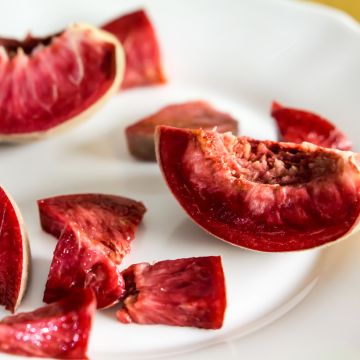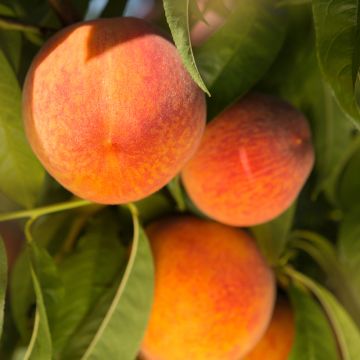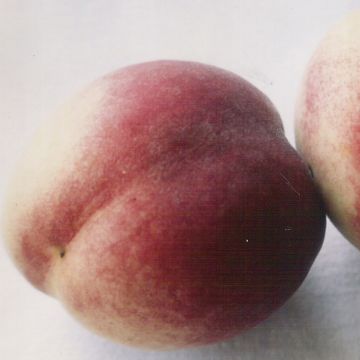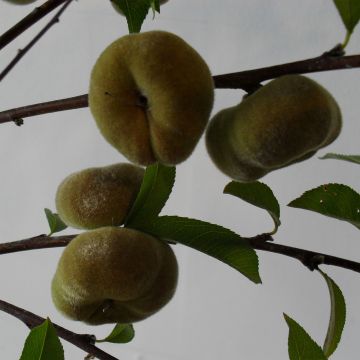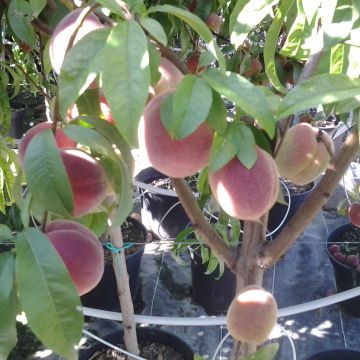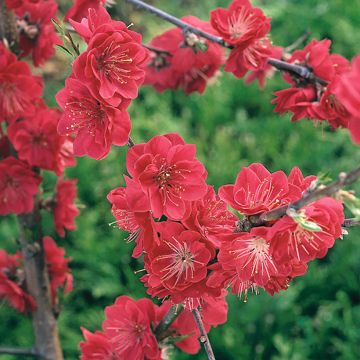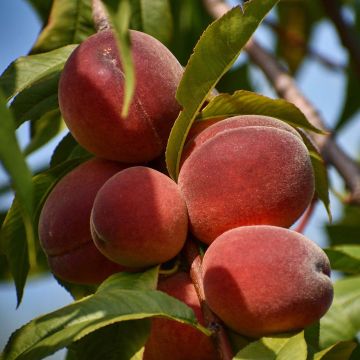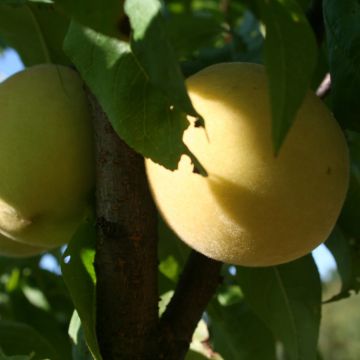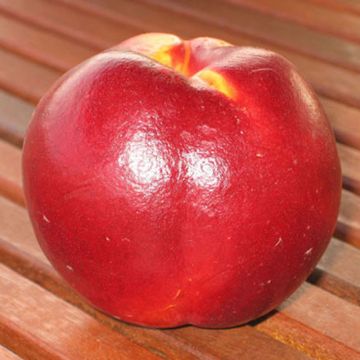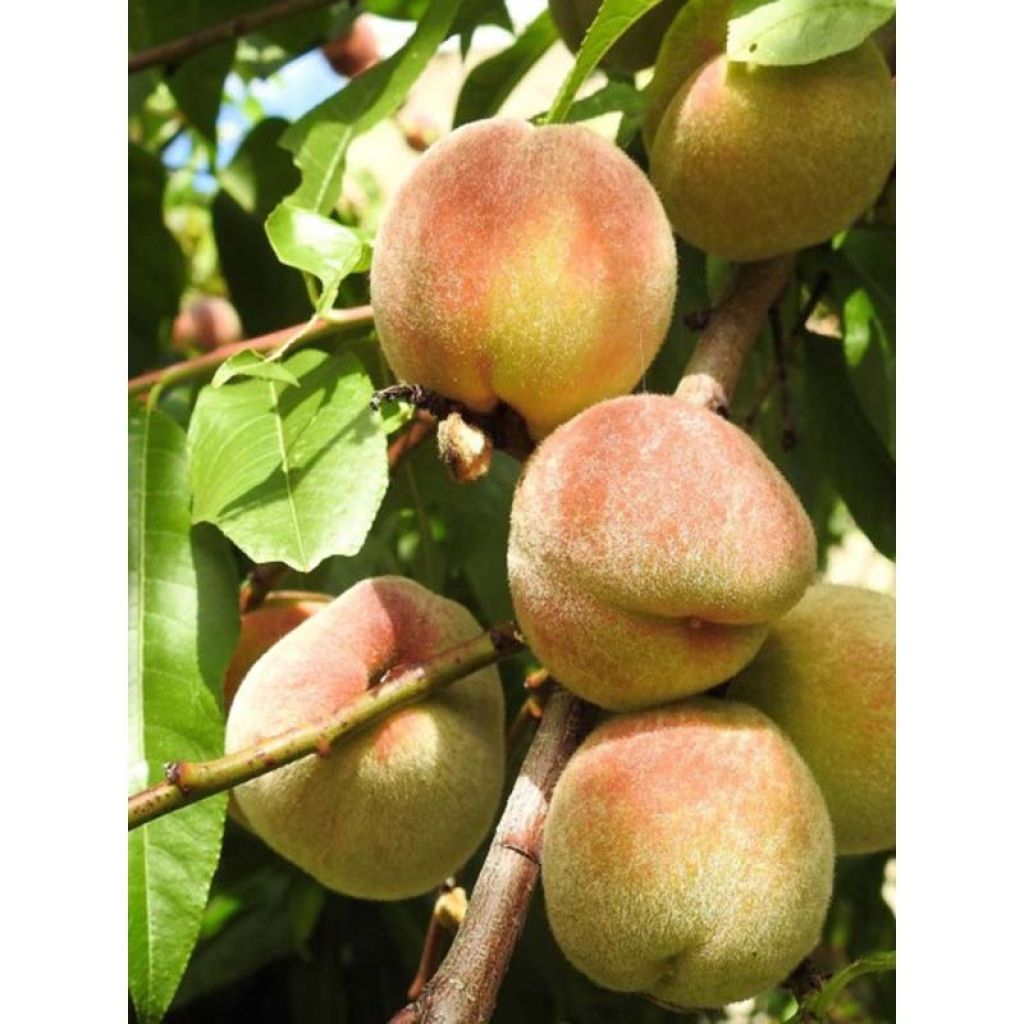

Prunus Nectarose - Nectarine tree
Prunus Nectarose - Nectarine tree
Prunus persica nucipersica Nectarose
Nectarine
This item cannot be shipped to the selected country
Oversize package delivery charge from €6.90
Oversize package delivery charge from €6.90
Delivery charge from €5.90
Delivery to Corse prohibited
More information
Schedule delivery date,
and select date in basket
This plant carries a 6 months recovery warranty
More information
We guarantee the quality of our plants for a full growing cycle, and will replace at our expense any plant that fails to recover under normal climatic and planting conditions.
Oversize package: home delivery by special carrier from €6.90 per order..
Express home delivery from €8.90.
Oversize package: home delivery by special carrier from €6.90 per order..
Express home delivery from €8.90.
From €5.90 for pickup delivery and €6.90 for home delivery
Express home delivery from €8.90.
Delivery to Corse prohibited: UE law prohibits the import of this plant from mainland France to Corse as part of the fight against Xylella fastidiosa. Please accept our sincere apologies.
More information
Description
The Nectarose Nectarine Tree is a late white nectarine variety that is useful for its natural resistance to brown rot, as well as the excellent taste of its fruits. The vigorous tree produces medium-sized round, shiny red nectarines, washed and speckled with yellow when ripe, whose pinkish-white flesh is particularly sweet. Harvesting begins at the end of August. This hardy nectarine tree is self-fertile and does not require the presence of another tree nearby to bear fruit.
The species name "persica" was given to the peach tree because it was believed to originate from Persia. In reality, all cultivated peach forms originate from northern China. The Nectarine tree, known as Prunus persica nucipersica in Latin, is a natural mutation of the peach tree that occurred in the 16th century. It is a small deciduous and hardy tree that can be grown in all temperate regions, with a preference for the south. Its spring blossom is quite early and can be destroyed by late frosts. The nectarine is similar to the peach but has smooth and shiny skin, its flesh is yellow or white, and its stone is free, while the peach stone adheres to the flesh.
Like many fruit trees, the Nectarose Nectarine Tree likes sunlight, heat, and shelter from strong winds. It thrives in deep, well-balanced, loose, and fertile soil, and does not tolerate excessive water or excessively heavy and compact soils, especially those with excessive clay content. It is a vigorous tree that can reach 6m (20ft) high with a spread of 3.50m (11ft). Its rather short trunk has numerous branches with varying vertical growth, giving it a slightly open and spreading habit. The nectarine tree starts bearing fruit at around 7 years of age, and its lifespan does not exceed 15 to 20 years.
Its deciduous foliage is a vibrant green with a slight almond scent. Its leaves are long, measuring 8 to 15 cm (3 to 6in) long and 3 to 4 cm (1 to 2in) wode, with a short petiole. The pink blossom opens in late March or early April. This means you will need to place the tree in a particularly sunny and sheltered location in northern regions. The flowers are hermaphroditic and self-fertile. The nectarines are round, bicoloured fruits with shiny red and light yellow skin, ready to be harvested towards the end of August or early September. Because they remain firm, the harvest can be spread over several weeks. Nectarines picked a little unripe will continue to ripen in the house. This tree does not require too much maintenance, except for a few preventive treatments against peach leaf curl. It tolerates severe pruning, but not every year.
On the table or in the kitchen: nectarines can be enjoyed raw, cooked, sweet, savoury, flambéed, in tarts, glazed or deglazed. They pair very well with wine and certain meats, such as duck. They can be found in numerous recipes, particularly for jams, compotes, and pastries...
Report an error about the product description
Prunus Nectarose - Nectarine tree in pictures


Plant habit
Fruit
Flowering
Foliage
Botanical data
Prunus
persica nucipersica
Nectarose
Rosaceae
Nectarine
Cultivar or hybrid
Other Peach and Nectarine trees
Planting and care
The Nectarose Nectarine tree is best planted from September to November, in full sun, in a warm and sheltered location away from strong winds. Dig a hole two to three weeks before planting, twice as wide and deep as the pot. On the day, place the tree with its pot in water to wet the entire root ball. Add compost to the bottom of the hole. Place the tree in the hole, and fill it with a mixture of soil and compost. Gently pack the soil around the base of the tree as you fill, the roots should be in close contact with the soil. The root ball should be completely covered. Water thoroughly. Make sure the soil does not dry out too much in summer, add mulch if necessary.
The Nectarine tree has a semi-pivot root system. It will thrive in fairly deep, well-loosened and fertile soils. It prefers light and well-draining soil.
Planting period
Intended location
Care
-
, onOrder confirmed
Reply from on Promesse de fleurs
Haven't found what you were looking for?
Hardiness is the lowest winter temperature a plant can endure without suffering serious damage or even dying. However, hardiness is affected by location (a sheltered area, such as a patio), protection (winter cover) and soil type (hardiness is improved by well-drained soil).

Photo Sharing Terms & Conditions
In order to encourage gardeners to interact and share their experiences, Promesse de fleurs offers various media enabling content to be uploaded onto its Site - in particular via the ‘Photo sharing’ module.
The User agrees to refrain from:
- Posting any content that is illegal, prejudicial, insulting, racist, inciteful to hatred, revisionist, contrary to public decency, that infringes on privacy or on the privacy rights of third parties, in particular the publicity rights of persons and goods, intellectual property rights, or the right to privacy.
- Submitting content on behalf of a third party;
- Impersonate the identity of a third party and/or publish any personal information about a third party;
In general, the User undertakes to refrain from any unethical behaviour.
All Content (in particular text, comments, files, images, photos, videos, creative works, etc.), which may be subject to property or intellectual property rights, image or other private rights, shall remain the property of the User, subject to the limited rights granted by the terms of the licence granted by Promesse de fleurs as stated below. Users are at liberty to publish or not to publish such Content on the Site, notably via the ‘Photo Sharing’ facility, and accept that this Content shall be made public and freely accessible, notably on the Internet.
Users further acknowledge, undertake to have ,and guarantee that they hold all necessary rights and permissions to publish such material on the Site, in particular with regard to the legislation in force pertaining to any privacy, property, intellectual property, image, or contractual rights, or rights of any other nature. By publishing such Content on the Site, Users acknowledge accepting full liability as publishers of the Content within the meaning of the law, and grant Promesse de fleurs, free of charge, an inclusive, worldwide licence for the said Content for the entire duration of its publication, including all reproduction, representation, up/downloading, displaying, performing, transmission, and storage rights.
Users also grant permission for their name to be linked to the Content and accept that this link may not always be made available.
By engaging in posting material, Users consent to their Content becoming automatically accessible on the Internet, in particular on other sites and/or blogs and/or web pages of the Promesse de fleurs site, including in particular social pages and the Promesse de fleurs catalogue.
Users may secure the removal of entrusted content free of charge by issuing a simple request via our contact form.
The flowering period indicated on our website applies to countries and regions located in USDA zone 8 (France, the United Kingdom, Ireland, the Netherlands, etc.)
It will vary according to where you live:
- In zones 9 to 10 (Italy, Spain, Greece, etc.), flowering will occur about 2 to 4 weeks earlier.
- In zones 6 to 7 (Germany, Poland, Slovenia, and lower mountainous regions), flowering will be delayed by 2 to 3 weeks.
- In zone 5 (Central Europe, Scandinavia), blooming will be delayed by 3 to 5 weeks.
In temperate climates, pruning of spring-flowering shrubs (forsythia, spireas, etc.) should be done just after flowering.
Pruning of summer-flowering shrubs (Indian Lilac, Perovskia, etc.) can be done in winter or spring.
In cold regions as well as with frost-sensitive plants, avoid pruning too early when severe frosts may still occur.
The planting period indicated on our website applies to countries and regions located in USDA zone 8 (France, United Kingdom, Ireland, Netherlands).
It will vary according to where you live:
- In Mediterranean zones (Marseille, Madrid, Milan, etc.), autumn and winter are the best planting periods.
- In continental zones (Strasbourg, Munich, Vienna, etc.), delay planting by 2 to 3 weeks in spring and bring it forward by 2 to 4 weeks in autumn.
- In mountainous regions (the Alps, Pyrenees, Carpathians, etc.), it is best to plant in late spring (May-June) or late summer (August-September).
The harvesting period indicated on our website applies to countries and regions in USDA zone 8 (France, England, Ireland, the Netherlands).
In colder areas (Scandinavia, Poland, Austria...) fruit and vegetable harvests are likely to be delayed by 3-4 weeks.
In warmer areas (Italy, Spain, Greece, etc.), harvesting will probably take place earlier, depending on weather conditions.
The sowing periods indicated on our website apply to countries and regions within USDA Zone 8 (France, UK, Ireland, Netherlands).
In colder areas (Scandinavia, Poland, Austria...), delay any outdoor sowing by 3-4 weeks, or sow under glass.
In warmer climes (Italy, Spain, Greece, etc.), bring outdoor sowing forward by a few weeks.


































